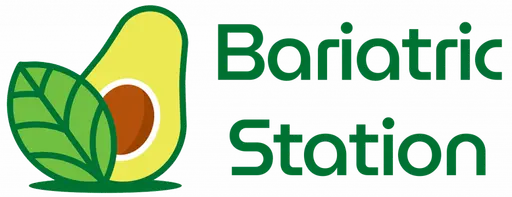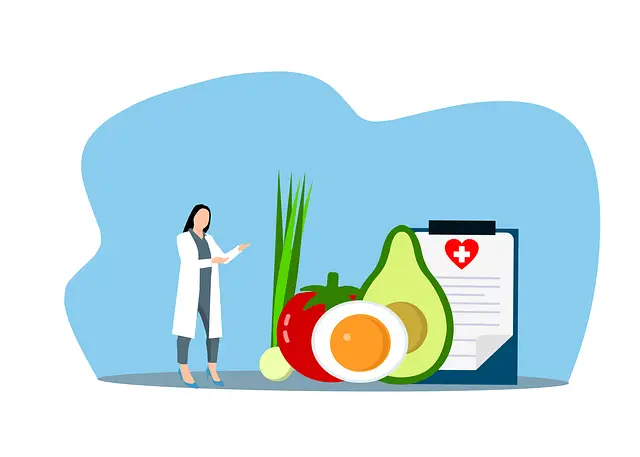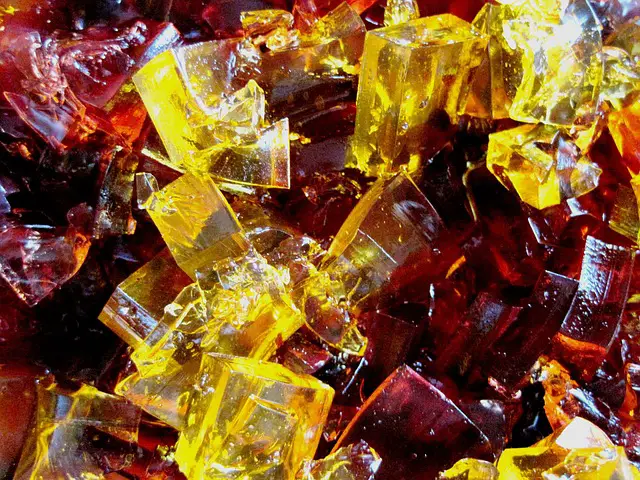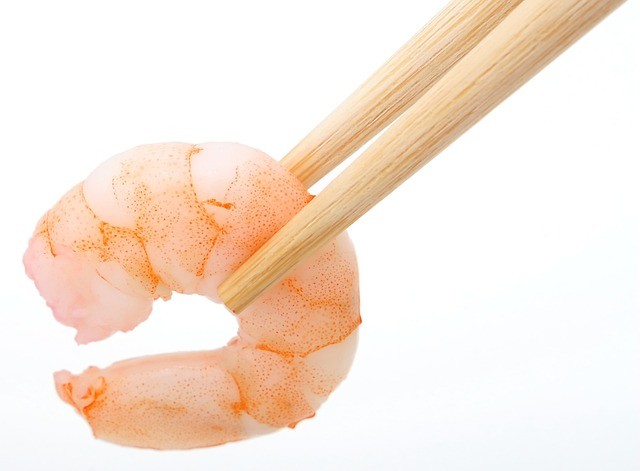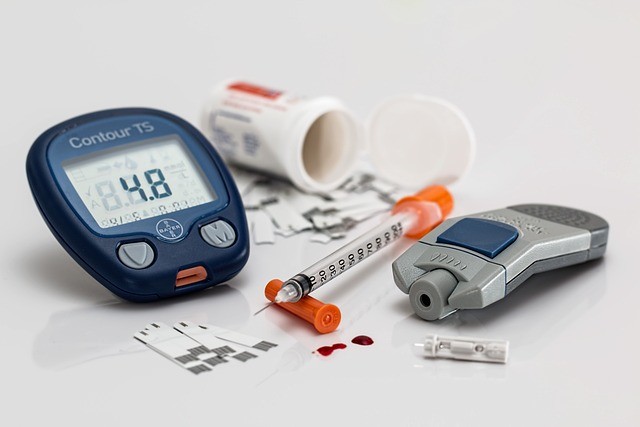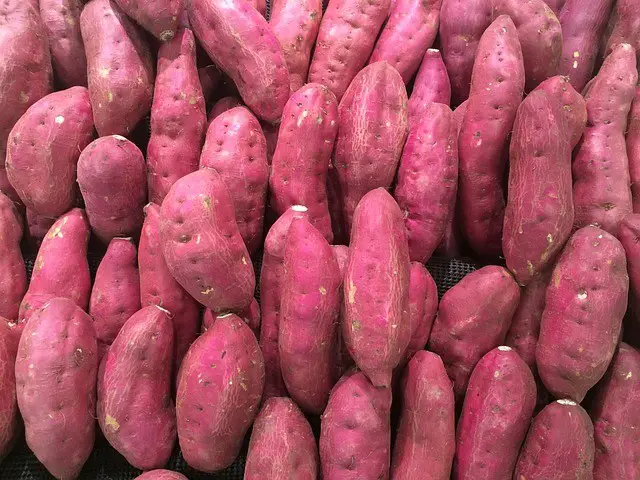The ketogenic diet is one of the low-carb diets, that replaces your energy source with fats. Ketogenic diets are popular for weight loss since they trigger the body into a state of ketosis, which promotes fat burning. But for your body to burn fat for energy, you have to deplete your glycogen stores.
In this article, we will look at the carb limit on this low-carb diet, how to calculate your carb intake, which foods are low-carb foods, which high-carb foods you should avoid on the ketogenic diet, and tips on keeping your carb intake low.
This article will help you answer, how many carbs do you eat on keto? Let’s get into it, shall we?
How Many Carbs Do You Eat on Keto?
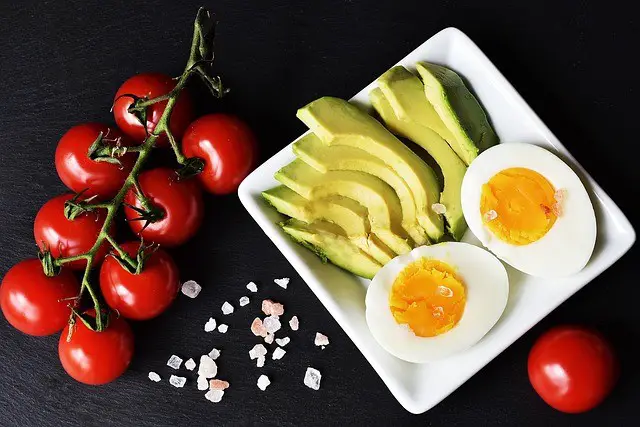
Most low-carb diets limit carbohydrate intake to not more than 100 g per day. Your carb limit will depend on the low-carbohydrate diet you follow. For example, the Atkins diet limits carb consumption to 20 g of net carbs at the beginning and gradually increases intake to 40 g, then 100 g of net carbs in the maintenance phase.
There are different types of ketogenic diets with different carb limits. These include:
- Standard ketogenic diet: this is a low-carb diet that recommends getting 70% of your total calories from fat intake, 10%-20% from protein, and 5%-10% from carbohydrate intake. Carbs are restricted to 20g-50 grams of carbs per day.
- Cyclical ketogenic diet: This type of keto diet involves consuming high-carb foods after periods of restricting carb consumption. Most people eat a low carbohydrate diet for 5 days and refeed on high carbohydrate foods (400g -500 g) for the remaining two days. When on this keto diet, you get 65%-90% of your calories from fats.
- Targeted ketogenic diet: Although the other ketogenic diets have carbohydrate restrictions, this type allows you to incorporate carbs into your exercise plan. The macronutrient ratio on the targeted ketogenic diet is 60% of calories from healthy fats, 30% from protein, and 10% from carbs.
- High-protein ketogenic diet: This type of keto diet is a high-protein diet. Your macronutrient ratio is as follows: 60% from fat, 35% from protein, and 5% from carbs.
As you can see your carbohydrate restriction depends on the type of low-carb diet you follow. People trying to lose weight are usually advised to follow the standard ketogenic diet since it limits more carbs than other ketogenic diets.
Do You Count Calories on Keto or Just Carbs?

Since the keto diet focuses on balancing your macronutrient ratios, it is unnecessary to count calories. The basic rules of keto recommend eating low carbs, and restricting starchy and sugary foods while paying attention to high-quality proteins and healthy fats.
Calories are not everything when it comes to eating food. Tracking your intake of carbs is more specific. Carbohydrates stimulate your appetite hormones, so restricting them will decrease the production of hunger-stimulating hormones, decreasing calorie intake. Calories do not affect your hormones.
The takeaway point is you don’t have to worry about calories on keto. Focus more on consuming healthy foods.
Types of Carbohydrates
Carbohydrates are broken down to produce the body’s primary energy source, glucose. There are different types of carbs in your food that have different impacts on your blood sugar, which influences your hunger and satiety responses. The types of carbs include:
Starch
This is a complex carbohydrate found in starchy vegetables, whole grains, and plant proteins like beans. It is broken down slowly in the body, so it takes longer for it to spike your blood sugar.
Starch is divided into:
- Slowly digestible starch: These take longer to be broken down and absorbed into the bloodstream.
- Rapidly digestible starch: These are digested faster and can affect your blood sugar faster. These are from refined and processed foods.
- Resistant starch: These types of starch are like fibers, they are indigestible. Resistant starch is fermented in the large intestine by gut microbiota and is good for digestion.
Sugar
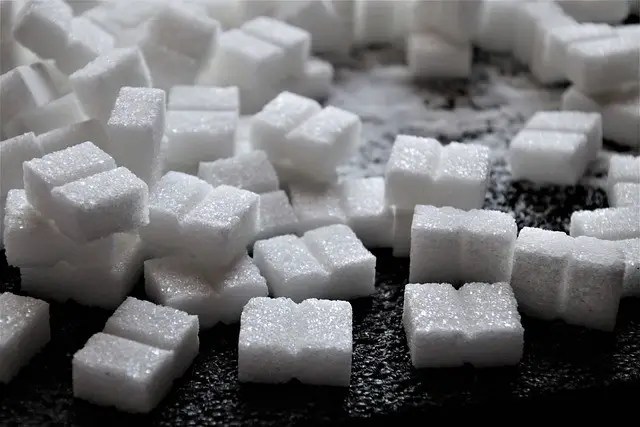
This refers to simple carbohydrates found in fruits and processed foods. The sugars found in food are fructose, glucose, lactose, and sucrose.
These types of carbs are rapidly digested in the body to release glucose quickly into the bloodstream. High intake of simple sugars causes frequent sugar spikes, increasing insulin levels, which triggers hunger.
Dietary Fiber
Fiber is a complex carbohydrate that is not digestible in the body. The main sources of fiber are whole grains, fruits, and vegetables. There are two types of fiber:
- Soluble fiber: These are the slow digestible fibers that when consumed do not spike your blood sugar. This type of fiber mainly improves lipid profile by binding with fatty acids to reduce low-density lipoproteins (LDL-cholesterol).
Inulin oligofructose, mucilage, beta-glucans, pectin, gums, wheat dextrin, resistant starch, and polydextrose polyols are soluble fibers.
- Insoluble fiber: This is the kind that keeps you hydrated and helps move stool through your intestine to help prevent constipation. Cellulose and some hemicellulose are examples of insoluble fiber.
- Functional fiber: This is the kind you get from supplements, and they are fibers isolated from starchy foods or manufactured sugars to help you meet your fiber needs if you are not getting enough from your diet.
Sugar Alcohols
These are carbohydrates with a similar structure to alcohol and sugar, however, they do not contain any ethanol. Sugar alcohols give you half the calories you get from sugars.
Sugar alcohols may or may not affect your blood sugar depending on their source. Natural sugar alcohols in fruits and vegetables do not significantly affect your blood sugar.
Although, those from processed sugars like in condiments and salad dressing can affect your blood sugar and increase your carb count.
Is It Better to Count Net Carbs or Total Carbs on Keto?
Total carbs vs net carbs on a low-carb diet is an important argument when trying to answer how many carbs do you eat on keto. To know whether to count total carbs or net carbs, you need to know what they both entail.
Total Carbs
Your total carbohydrate intake refers to all the carbohydrates you are consuming from your food. This includes sugars, starch, sugar alcohols, and fibers. All of these sum up to your total carbohydrates.
Net Carbohydrates
Net carbs only count the number of digestible carbs in your diet. Your net carbs count is your total carbs minus fiber. As mentioned before, fiber is not digested in your body, so it does not contribute to your carb count.
Some sugar alcohols are also not digested so you can subtract them from your total carbs to get your net carbs. As long as it is not absorbed, it doesn’t count.
From this, do you count net carbs or total carbs on keto diets? Since what is not absorbed doesn’t matter, it makes sense to count what is digestible since it is what contributes to your daily carb limit.
How Many Carbs Do You Need to Go into Ketosis?
Ketosis is the process of fat metabolism to produce ketones for energy. Fats are the body’s secondary energy source. You need less than 50 g of carbohydrates to trigger ketosis. Your body will break down stored fat or dietary fats when in ketosis. A high carbohydrate diet will kick you out of ketosis.
I hear the question in your mind, which foods will you eat to achieve this very low carbohydrate limit? Let’s take a look at foods to eat on your low-carb diet.
Foods You Can Eat on the Ketogenic Diet
Low carbohydrate foods appropriate for the keto diet include:
Low Carb Veggies
Eating nonstarchy vegetables will enable you to keep your grams of carbs at a 20 -50 g limit. These vegetables are low-carb and low-fat diets, so it is important to sauté them in healthy fats to be able to meet your recommended fat intake.
Here are a few veggies and their grams of net carbs per 100 g serving:
- Below 1 gram of net carbs: kale, spinach, olives, and alfalfa sprouts. These are very low-carbohydrate vegetables to add to your diet.
- 1-1.9 g of net carbs: Romaine lettuce, Bok Choy, celery, asparagus, avocado, white mushrooms, and radishes.
- 2-5 grams of net carbs: Eggplant, green bell peppers, green beans, broccoli, tomatoes, cauliflower, cucumber, cabbages, and arugula.
Some vegetables contain more carbs than the ones mentioned above and are considered medium-carb-content vegetables. These have a higher amount of net carbs per serving and should be consumed in moderation to avoid blood sugar spikes. They include:
- Yellow bell peppers: 5.5 g of net carbs
- Artichokes: 5.1 g of net carbs
- Beets: 6.76 g of net carbs
- Carrots: 5.22 g of net carbs
- Green peas: 8.7 g of net carbs
- Onions: 7.64 g of net carbs
- Celeriac: 7.4 g of net carbs
Fish and Seafood
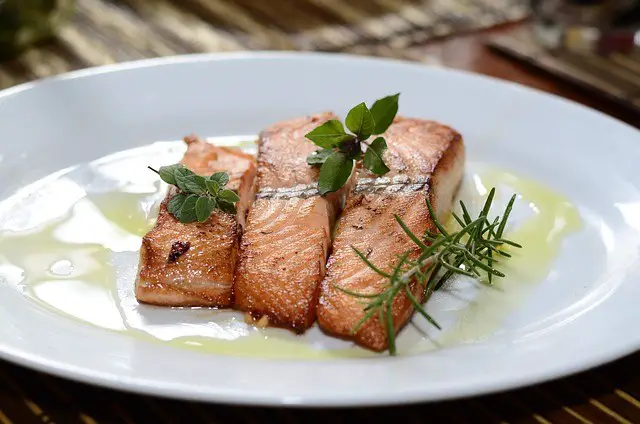
Fatty fish and seafood are good sources of protein and healthy fats. They contain essential nutrients like selenium, omega-3 fatty acids, and B vitamins.
Studies have shown that consumption of fish decreases the prevalence of cardiovascular disease and mild cognitive impairments. Foods rich in omega-3 fatty acids like fatty fish also help with blood sugar regulation in obese patients.
Other seafood like shellfish vary in carb count, with others having higher net carbs per serving. Octopus and oysters have more carbs than crabs and shrimp so moderate their consumption in your diet.
Meat and Poultry
How many carbs do you eat on keto should not be the only question you ask yourself as a keto dieter. The ketogenic diet demands moderate protein intake. Meat and poultry like chicken and fresh meat are good sources of high-quality proteins for your diet.
Proteins are broken down to produce amino acids that are needed for building muscles and preserving lean body mass. Choose fresh meat and lean protein over processed meats which may contain unhealthy saturated fat and trans-fat that are bad for your heart.
The ketogenic diet calls for consuming moderate proteins. Your body breaks down proteins to produce glucose through a process known as gluconeogenesis. Eating too much protein will provide your body with enough proteins for gluconeogenesis which will inhibit ketosis.
Nuts, Seeds, and Healthy Oils
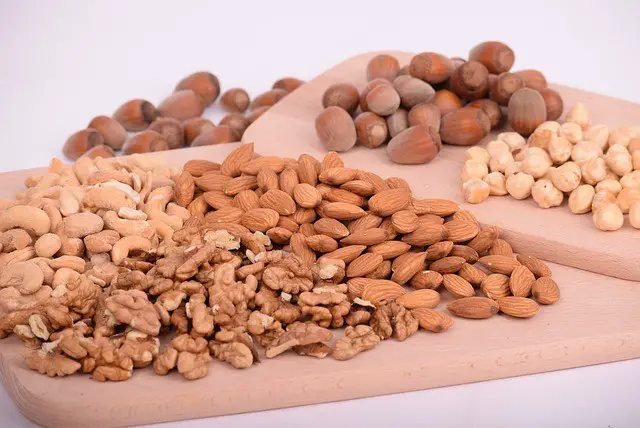
Nuts and seeds contain protein, monounsaturated fat (MUFAs), polyunsaturated fats (PUFAs), and medium chain triglycerides (MCTs) that make them a good addition to high-fat diets.
Some of the keto-approved nuts include walnuts, almonds, Brazil nuts, coconuts, hazelnuts, cashews, macadamia nuts, and pistachios. Keto-friendly seeds are hemp seeds, flax seeds, sunflower seeds, sesame seeds, and chia seeds.
The net carbs per ounce of keto-friendly nuts and seeds are as follows:
- Walnuts: 2 g of net carbs
- Macadamia nuts: 2 g of net carbs
- Brazil nuts: 1 g of net carbs
- Almonds: 3 g of net carbs
- Cashews: 8 g of net carbs
- Pistachios: 5 g of net carbs
- Chia seeds: 2 g of net carbs
- Flaxseeds: 0 g of net carbs
- Sesame seeds: 4 g of net carbs
Consuming 50-60 g of nuts 4 times a week reduces your chances of developing non-alcoholic liver disease (NAFLD) by 15%. Incorporating nuts and seeds into your high-fat diet can help maintain a healthy body weight, reduce risk factors of chronic disease, and improve your intake of fiber, protein, and healthy fats.
Some plant fats like coconut oil and olive oil are allowed on the keto diet. They contain healthy saturated fats like omega 3s, MUFAs, and PUFAs that prevent the development of cardiovascular disease. Coconut oil is particularly high in saturated fat MCTs that increase the production of ketone bodies.
Eggs
Eggs are rich in protein and high in a good kind of cholesterol to improve your overall health. The egg yolk is particularly rich in antioxidants like lutein and zeaxanthin that lower inflammation, a risk factor of metabolic syndrome. Eggs can also help you lower your cholesterol levels regulating your blood lipid levels.
Egg yolks are rich in choline and lecithin, which are cholesterol-mobilizing nutrients. They also contain vitamin K2 which prevents calcium from depositing on the walls of your blood vessels. It mobilizes calcium to the bones rather than blood vessel walls for bone strengthening.
High Fat Dairy Products
High-fat dairy products like cheeses like feta cheese, plain yogurt, Greek yogurt, ghee, butter, and heavy cream provide your body with enough fat to trigger ketosis.
Dairy products contain calcium that helps promote energy loss through fecal fat excretion and promotes body fat oxidation. Calcium also helps strengthen bones and teeth.
Greek yogurt is a good addition to your low-carb diet to promote gut health, weight loss, and muscle recovery.
Low Carb Fruits
Most fruits are high in sugar which disqualifies them as keto foods. However, there are low-carb fruits that you can incorporate into your ketogenic diet for weight loss. Berries like strawberries, blueberries, blackberries, and raspberries are fruits allowed on the keto diet.
Berries contain antioxidants that can reduce inflammation and promote the symptoms of arthritis. They are also rich in potassium which is necessary for blood pressure regulation. In addition, they are rich in vitamin B9, vitamin C, and manganese.
Besides berries. lemons, watermelons, cantaloupes, and limes are keto-friendly as well.
Unsweetened Beverages
Traditional teas and plain coffees are okay on the ketogenic diet because they have zero calories and no carbs. Black coffee, Espresso, and Americano coffee do not contain any added sugar or flavoring which keeps their carb count at zero.
Traditional teas like green tea, black tea, oolong tea, white tea, pu’er tea, hibiscus tea, herbal tea, chamomile tea, and rooibos tea are also good on the ketogenic diet.
Teas can help with body weight loss and managing blood pressure. Green tea specifically contains tannins and catechins that have antioxidant properties reducing inflammation and oxidative stress. It also contains flavanols that lower high blood pressure.
Dark Chocolate
How many carbs do you eat on keto? Very small amounts! For a sweet tooth on a keto diet, this is bad news considering most of the sugary foods are off-limits. But that shouldn’t deter you from following the keto diet.
You are allowed to have 2 servings of dark chocolate per week to enjoy the benefits it has to offer while satisfying your sugar craving. Unlike white chocolate, dark chocolate has a higher percentage of cocoa powder and no milk or butter. This is what makes it okay on a low-carb diet.
A 100 g serving of dark chocolate contains 45.9 g of total carbs minus fiber, 10.9 g of fiber, and 35 g of net carbs. Research suggests that consuming dark chocolate can help lower blood lipid levels, blood pressure and improves cognitive function.
Low Carb Sweeteners
When on a weight loss journey, you need to avoid sugar at all costs. This is because excess sugar is converted to fat which leads to weight gain. There are low-carb substitutes for sugar that will not spike your blood sugar kicking you out of ketosis.
Sweeteners you can use on your ketogenic diet include monk fruit sweetener, stevia, and Allulose.
It is important to mention the foods to keep off the ketogenic diet to stay in ketosis.
Foods Not to Eat on A Keto Diet
Foods to be avoided on a ketogenic diet include:
- Starchy vegetables like sweet potatoes, Irish potatoes, yams, and cassava.
- Fruits: fruits may contain essential nutrients for weight loss but they are high in sugars. Keep off all the other fruits not mentioned as keto-friendly above. Avoid fruit juices and dried fruits as well.
- Whole grains
- Sugar and sweeteners like honey, agave, maple syrup, and corn syrup.
- Processed foods like processed meats, baked foods, and refined sugars.
- Keep off sweetened condiments like ketchup and tomato sauce. Anything sweetened contains added sugar that will lead you to exceed your ketogenic diet carb limit.
What are the Health Benefits of the Ketogenic Diet?
Why is it important to know how many carbs do you eat on keto? Why restrict your consumption of carbs and increase fat intake?
- Promotes weight loss and management.
- Increase brain health and cognitive function.
- Assists with blood sugar regulation.
- Can help manage binge eating disorders and prevent eating disorders.
- Reduces inflammation and oxidative stress.
- Can help manage the symptoms of polycystic ovary syndrome, PCOS.
- Helps manage mild cognitive impairment like Alzheimer’s, Parkinson’s, and migraines.
Are There Risks of the Keto Diet?
The main con that comes with the keto diet, like any restrictive diet is the risk of nutrient deficiencies. You are at a higher risk of being deficient in the following nutrients when eating a ketogenic diet:
- Calcium
- B vitamins like folate and thiamin
- Magnesium
- Vitamin D
Consider supplementing these micronutrients on the ketogenic diet to mitigate your inadequate intake. Also, consider taking electrolytes when on the keto diet. High levels of ketone bodies increase urination. This is because your body is trying to excrete those ketone bodies.
This diuretic effect can lead to the loss of electrolytes like sodium and potassium which play a key role in regulating fluid balance and maintaining the body’s ph.
Another con that comes with following the keto diet is the keto flu. Keto flu refers to a combination of symptoms that one experiences when you start the keto diet. These symptoms are temporary and only last one or two weeks depending on the individual.
You experience these symptoms because your body is not used to using fats as its main energy source. It needs time to be fat-adapted before the symptoms go away. The symptoms of the keto flu include:
- Headache
- General body weakness
- Brain fog
- Nausea and vomiting
- Diarrhea and constipation
- Muscle cramps
- Dizziness
- Food cravings
- Insomnia
- Stomach pains
- Irritability
You can manage these symptoms by staying hydrated, replacing electrolytes lost, getting enough fats, and avoiding high-intensity physical activities.
How Can I Speed Up My Ketosis Weight Loss?
Here are a few ways to speed up ketosis while on a keto diet:
- Lowering carb intake to below 50 g of net carbs per day.
- Consider exercising on your low-carb diet.
- Intermittent fasting while keto dieting can speed up ketosis. Try speed keto.
- Increase intake of healthy fats.
- Moderate your protein intake. Excess intake of protein allows for gluconeogenesis which inhibits ketosis.
- Exogenous ketones can increase your blood ketone levels maintaining ketosis.
- Supplement your diet with MCT oils. MCT oils can help you reach ketosis even though your fat intake is low.
Where Do You Lose Weight First on Keto?
Being in ketosis does not mean you lose weight immediately. Even though the keto diet promotes fat burning, it burns dietary fats before body fat.
You will not lose weight immediately just because you are in ketosis. What can help your body deplete the fat you consume and start using stored fat is by creating a calorie deficit that allows your body to run out of dietary fat.
Don’t lose faith in ketosis yet. Research suggests that your body burns more calories in ketosis, which increases your metabolic rate by 15-20%. This is assumed to be because you produce more heat in ketosis than other metabolic pathways for energy.
Even though you don’t burn stored fat first, you stand a higher chance of burning body fat daily with ketosis. This makes it a better option for meeting your weight loss goals. Remember it also suppresses hunger reducing food intake, making it easy for you to achieve a calorie deficit.
Bottom Line
How many carbs do you eat on keto? Your intake of carbs is restricted to 20 g-50 g per day. This is enough to trigger and maintain ketosis. Keeping your carb consumption low with keto foods will ensure you are in fat-burning mode as often as possible.
Always check food labels to know the carb content of the foods you are eating. The nutritional facts of foods are included in food labels so pay attention to these.
Was this article helpful? Drop any questions you have on carb intake while on the ketogenic diet in the comment section below. Stay keto!
